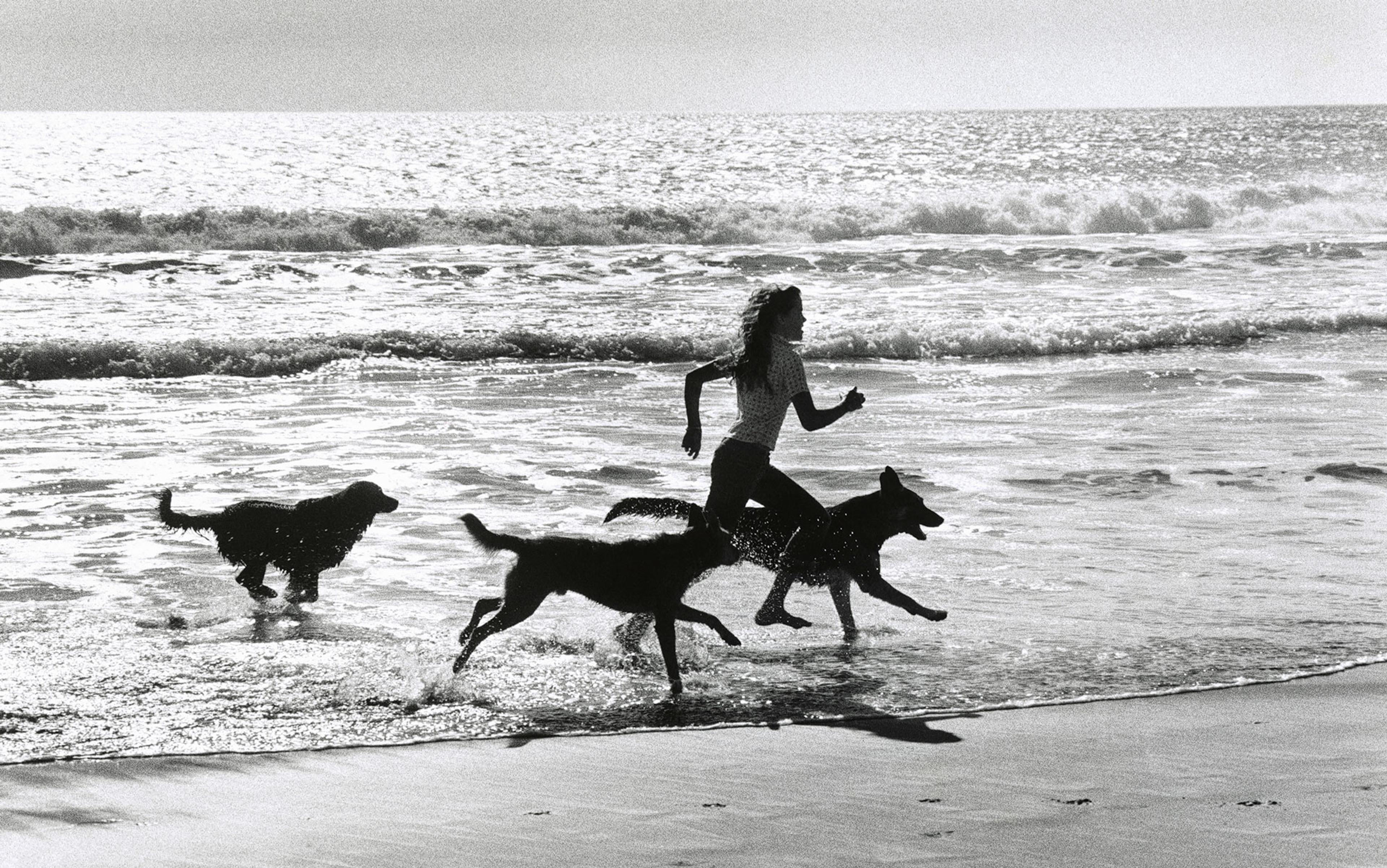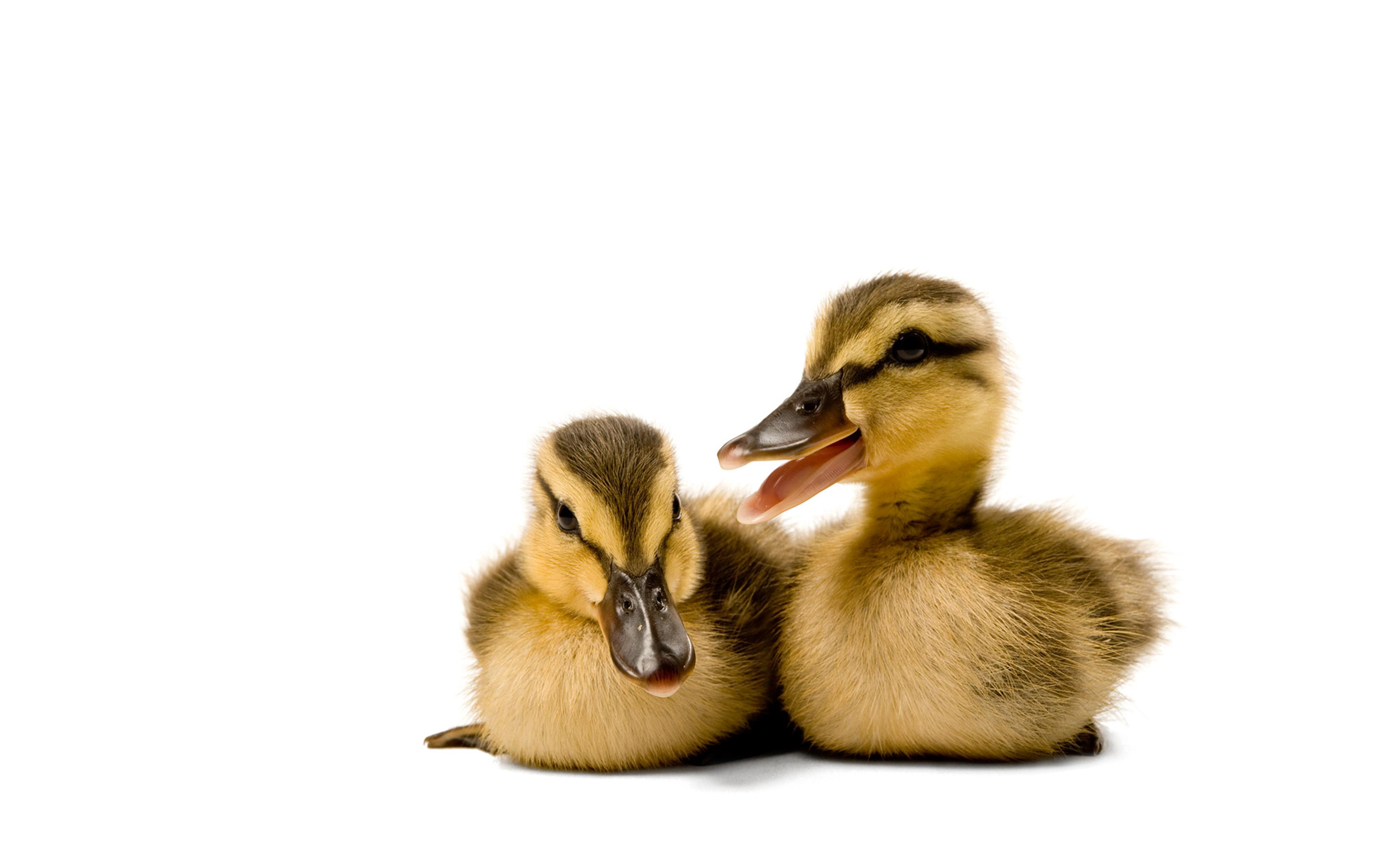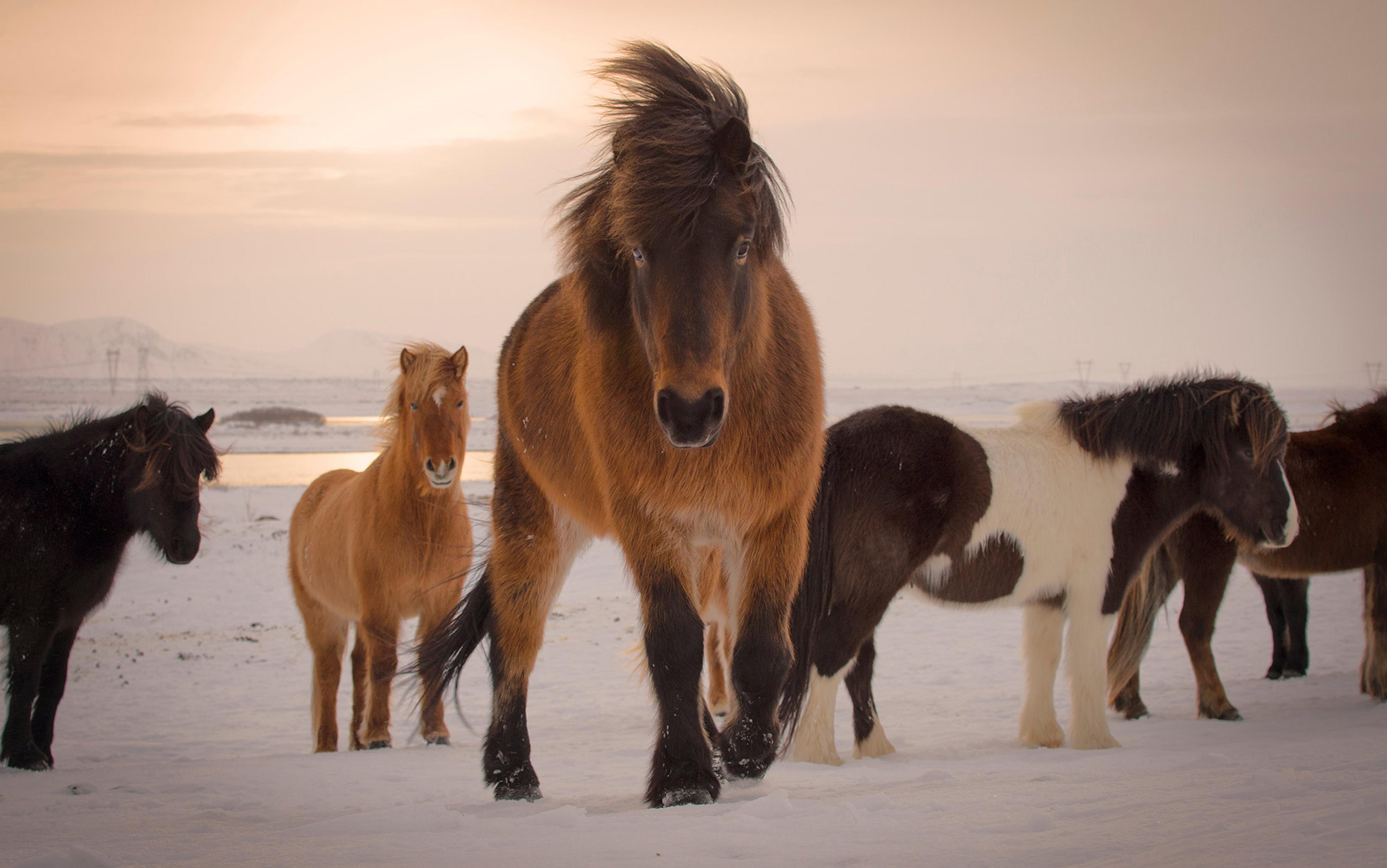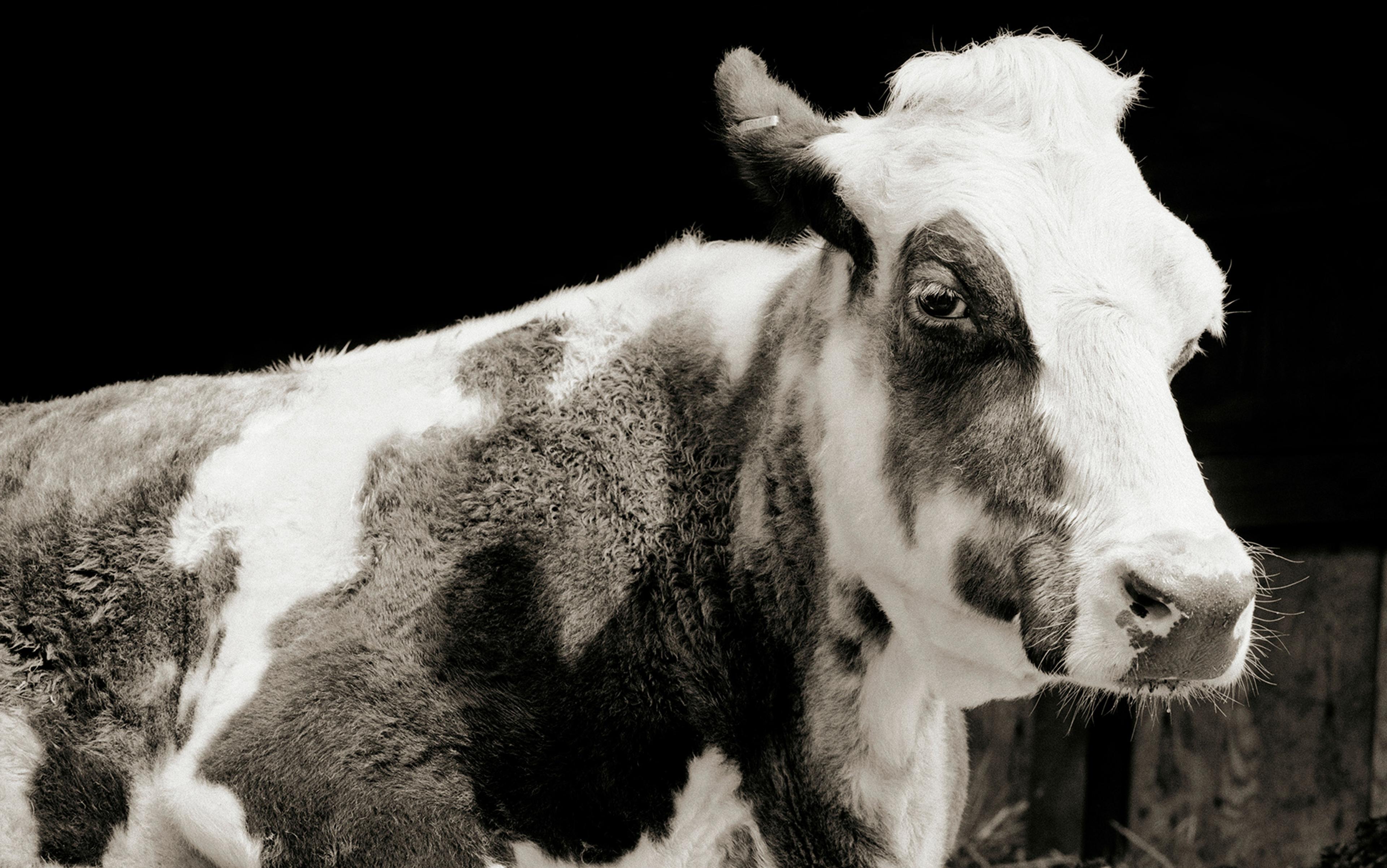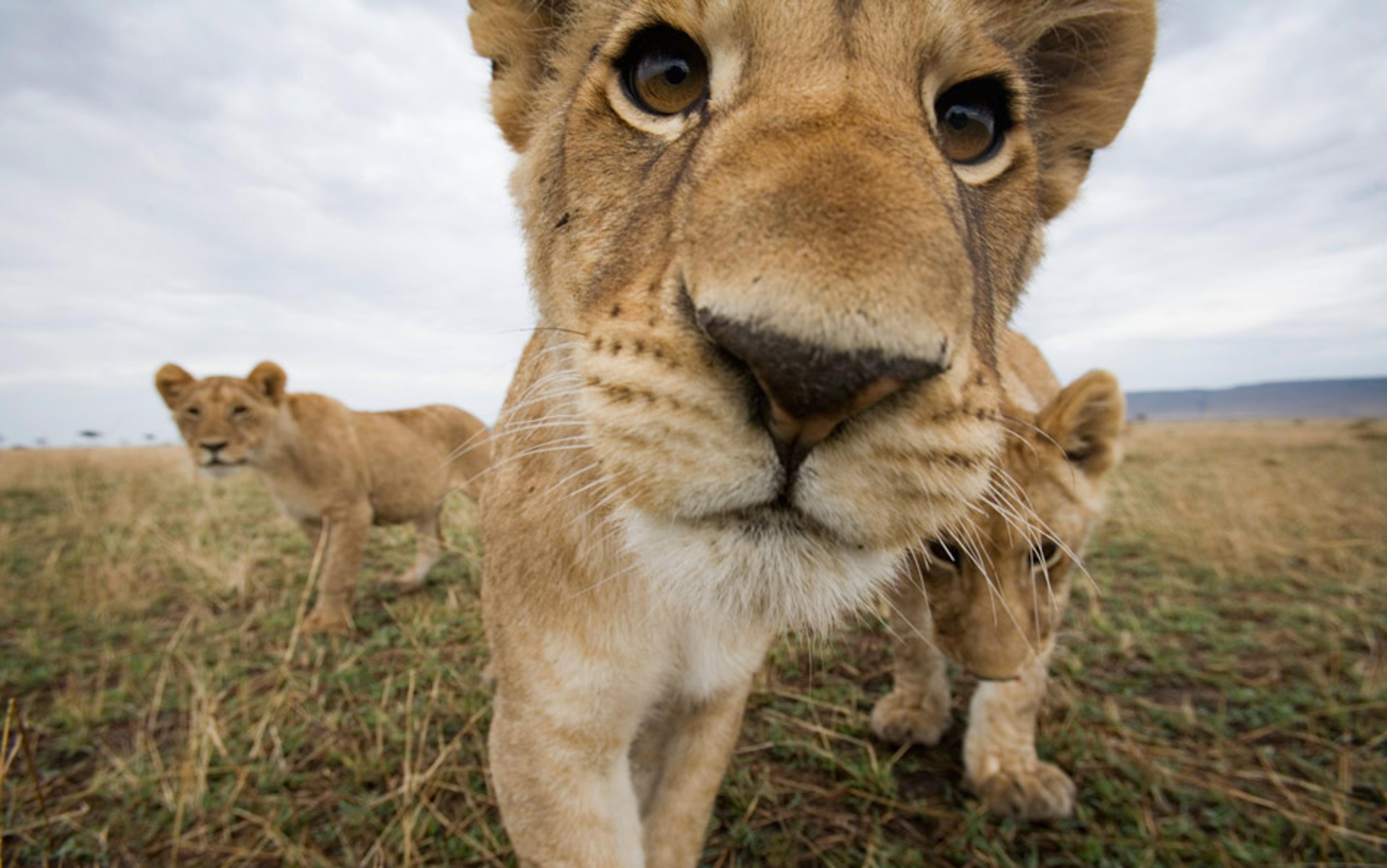The internet, as everyone knows, was made for cat videos. With social media, it has branched out. Pictures and videos of all sorts of animals regularly go viral these days. A baby turtle wiggles and grins as its belly is scratched with a toothbrush, a polar bear delicately pets and cuddles a husky, a hamster freezes and flops on its back when its owner shoots finger guns.
Part of the reason they go viral is simply that animals are cute. But people also connect with the apparent joy of a turtle getting its belly rubbed, or the apparent friendship of bear and dog together, and the apparent playfulness of the hamster. The animals in these pictures and videos are downright relatable. The feeling of kinship and understanding that comes with this is a powerful and wonderful feeling. These connections that are formed can have real value for us as viewers, but also for the animals.
Unfortunately, the initial enthusiasm of these posts is often squashed by someone rightly noting that the animal’s reaction is not joy or pleasure, but fear, anger or pain. The turtle is actually snapping at the brush, which is likely too stiff. At the same location as the bear and dog, another polar bear ate a member of that dog’s pack. And the hamster is actually displaying a last-ditch survival response known as ‘tonic immobility’, which is frightening and stressful for the animal.
It’s hard to know exactly what is going on behind the thin slice of a social media post, but these examples are likely not what they originally seemed. Not all viral animal posts take this kind of turn, but it isn’t uncommon that they do. These cases, grim as they may be, can tell us a lot about ourselves and how we see animals. Thinking about them, what goes wrong and what we can do, might even make us better companions to the animal world.
The reason we often get cases like this wrong is that we interpret the emotional content of many behaviours (facial expressions, postures, movements and vocalisations) automatically and unconsciously. We do so in ways that work reasonably well for other humans but can misfire when we turn them on animals. In the examples above, the turtle looks happy because its open mouth turns up at the edges, appearing like a big human grin. The polar bear’s petting looks so much like the way we might pet a dog that it appears tender to us. The hamster looks playful and relaxed, perhaps like a child flopping on the couch. Tonic immobility is not a familiar response in humans, so it doesn’t look stressful to us.
This is a version of anthropomorphism: interpreting animals as we would interpret another human.
Anthropomorphism takes many forms. We anthropomorphise animal cartoon characters like Mickey Mouse or Bluey when we draw them standing upright with human arms and vaguely human faces. We anthropomorphise forces of nature when we depict them as spirits or deities in folklore. We anthropomorphise our pets when we have conversations with them about our day. This can be playful or serious, and may or may not be taken literally.
But researchers of animal minds have long worried that our natural facility with anthropomorphism might cause problems for research. Anthropomorphic explanations of animal behaviours might feel more compelling or plausible than they ought to. This could lead researchers to the wrong conclusions: to misunderstand the motivations and goals behind behaviour and to endorse inaccurate understandings of their mechanisms of thought. As a result, many research traditions have treated anthropomorphism as a kind of cardinal sin.
The standard view has been that anthropomorphism is primarily an error of overestimating the intelligence of animals. This is partly a matter of definition. This view defines anthropomorphism by identifying a set of traits as uniquely human, or at least human-like. Relevant traits might include reasoning capabilities, emotions or social practices such as culture. Any time someone attributes one of these capacities to an animal, that claim is liable to be attacked as anthropomorphic and, thus, easily dismissed. There is also an empirical assumption about human psychology: that this particular kind of error dominates our thinking about animals. If it does so dominate, perhaps a zealous response is justified.
Morgan’s Canon was considered significant reason to deny that there were any emotions at all in animals
This standard view is apparent in the most commonly proposed method for avoiding anthropomorphism, a principle known as Morgan’s Canon, after C Lloyd Morgan, who proposed it in 1892. In its most standard modern interpretation, Morgan’s Canon counsels researchers to posit the simplest psychological process to explain observed behaviour. It’s hard to overstate the importance of this principle in the 130 years that have followed. The comparative psychologist Bennett Galef calls Morgan’s statement of the Canon ‘possibly the most important single sentence in the history of the study of animal behaviour’. The idea is that Morgan’s Canon works in direct opposition to anthropomorphism because Morgan’s Canon suppresses the perceived intelligence of animals, while anthropomorphism inflates it.
In recent decades, many authors, especially in ecology but also philosophy, psychology and neuroscience, have pushed back against this attitude towards anthropomorphism. Animals, these researchers argue, are a lot like us, and many ‘anthropomorphic’ claims about animals are actually true. This conclusion is justified by the evidence. As such, overly zealous opposition to perceived anthropomorphism is misguided, and has in fact done damage.
Scientists in this camp have also specifically criticised Morgan’s Canon. For example, the primatologist Frans de Waal and the philosopher Elliott Sober argue that the overuse of Morgan’s Canon produces errors in the opposite direction of anthropomorphism. De Waal calls this anthropodenial: the denial that animals have human-like traits that they actually do have (this topic has inspired some of the most gleefully convoluted vocabulary in academia).
For example, through most of the 20th century, Morgan’s Canon was considered significant reason to deny that there were any emotions at all in animals. In examples such as those opening the article, behaviours were explained away as mechanical, unfeeling responses – as, the thinking went, they should. We have learned that this was a mistake. These animals do have emotions, and are plausibly feeling strong ones in the examples above. To deny them emotions was, in fact, anthropodenial.
My emphasis on errors based on anthropomorphism might make it seem that I am advocating a return to the old attitudes towards anthropomorphism, against the new view. I do not intend it this way. In fact, I’m an advocate of the new way of thinking myself. Instead of getting caught in a black-and-white debate, however, I want a more complicated, empirically informed discussion of competing ideas. Once we agree that animals do, in fact, have emotions, we can acknowledge that the anthropomorphic mistake is not seeing emotion where there is none – it is seeing the wrong emotion. Which precise emotion we attribute to whether an animal is happy or in pain has nothing to do with how smart the animal is. Whether we interpret the emotion correctly doesn’t fit into the standard dispute over whether emotion is there, at all.
Each of us has a suite of perceptual, emotional and cognitive capacities that allow us to engage and understand one another socially. Suppose I am sitting across from you at a pizza party, and I recognise that your gaze is drifting towards the last slice of pizza. I sense that you are feeling a bit agitated or uncertain. I might, then, predict that you are thinking of taking the last slice. If I’m feeling generous, I might encourage you to go for it. If not, I might grab it myself before you make a move.
These capacities help guide and structure all sorts of mundane interactions, and we are generally not even aware we are using them. They are generally, but not perfectly, tuned for human interaction, either through evolution or personal experience.
Things can get messy, though, when we use them to interpret animals.
Perhaps the best-studied version of this is the primate ‘grin’. Other primates will pull back their lips and bare their teeth in a display that looks very much like a human smile. The visual impact of seeing this face is often clear: it looks like the animal is happy, even sometimes deliriously happy.
Our unconscious, automatic minds function in ways we don’t fully grasp and can’t easily foresee
The animal is not happy, it turns out. The exact signalling function varies by species, but it usually signals something more like fear or anxiety, often by a submissive individual in a tense social situation. (In chimpanzees and bonobos, our closest relatives, it seems it can signal pleasure in specific situations; this is likely a sign that the display is evolutionarily related to the human smile.)
The effect here is perceptual; just as plainly as you see a face, you see a happy face. But you are wrong, because other species use that signal differently. This is, in fact, anthropomorphism, because you are interpreting an animal’s behaviour in the same way we would interpret human behaviour. However, it involves no assertion that there is a special set of human-like traits, and it need not involve inflating or deflating the perceived intelligence of the animal.
This kind of anthropomorphism is a form of cognitive bias resulting from shortcuts taken by our reasoning processes, usually without our intent or awareness. Research into cognitive biases took off in the 1970s, when Amos Tversky and Daniel Kahneman showed that people systematically deviate from rational decision-making, relying instead on mental shortcuts – called heuristics – that can lead to predictable errors in judgment. Since then, scientists have uncovered a range of implicit social biases – such as those related to race, gender, age and socioeconomic status – often operating outside our awareness, that shape how we think and behave. The broader lesson is that our unconscious, automatic minds function in ways we don’t fully grasp and can’t easily foresee. To better anticipate and manage these effects, we need to study them closely.
We should approach the topic of anthropomorphism – and how we perceive animal minds – through the lens of bias. Traditionally, assumptions about how and when people anthropomorphise have been so fixed that the psychology did not seem worth investigating. More nuanced attitudes can be found. For example, even though they advocate for anthropomorphic views of animals, the ethologists Jesús Rivas and Gordon Burghardt memorably note that it can be tricky: ‘Anthropomorphism is like Satan in the Bible – it comes in many guises and can catch you unawares!’ While the recognition of ‘many guises’ is progress, it makes the need for empirical research only more pressing. By focusing on implicit anthropomorphism – the unconscious projection of human qualities – we shift attention from debating specific ‘humanlike’ traits to examining the deeper psychological mechanisms that make anthropomorphism so slippery.
This, I believe, is the most challenging and most compelling dimension of the problem.
We are only just beginning to understand how the processes of social cognition work, and how they can lead us to err. Still, there are some general lessons we can draw.
We actually get it right a fair amount of the time. Many facial expressions may have evolved in ways that are broadly shared across species – though this remains a subject of debate. And, sometimes, we get things right for the wrong reasons. Take dogs, for example: while they don’t ‘smile’ in the human sense, the corners of their mouths often turn upward when they’re calm and relaxed. So, when a dog looks happy to us, we’re usually correct in reading that emotion. In fact, experimental evidence shows that people are fairly good at recognising certain dog emotions, particularly happiness and aggression. Dogs may be a special case: having co-evolved with humans over thousands of years, and being so familiar to us in daily life, they’ve become especially readable.
For a long time, we failed to recognise the octopus’s cognitive sophistication, in part because of its alien biology
Still, we shouldn’t assume that our success with dogs extends to other species. My interest lies in the cases where our intuitive folk psychology misfires – where we apply human mental frameworks to animals and get it wrong. Highlighting those errors isn’t meant to dismiss our perceptual strengths or paint a bleak picture. Rather, it’s a way to understand where and why we go wrong – so that we can learn to do better.
The processes that contribute to our implicit folk psychology – bound not in empirical research but everyday experience – are numerous and varied. I’ve mostly discussed emotion-recognition as a perceptual ability, but it’s best to refer to anthropomorphic bias as a constellation of related biases rather than one.
The errors we make in interpreting animal behaviour don’t always involve exaggerating intelligence – and in many cases, they do the opposite, causing us to overlook forms of intelligence that differ radically from our own. Consider the octopus: for a long time, we failed to recognise its cognitive sophistication, in part because of its alien biology – its neurons are distributed throughout its tentacles rather than centralised in a single brain. Or take the example of a crow glaring at us as we cross the quad: it may look like calculated malice, but we’re likely misreading intention based on human cues. These errors are hard to quantify, making it difficult to say how often we overestimate versus underestimate animal minds. Still, the evidence suggests that we are not overwhelmingly prone to inflating animal intelligence, as the traditional view implies. Much of the effort to curtail anthropomorphism – like the application of Morgan’s Canon – may be targeting the wrong problem.
In the end, debates about anthropomorphism revolve around the values we hold and the goals we set for our understanding of the world. Staunch opposition to anthropomorphism is often driven by a particular ideal of objectivity in science. The conception of objectivity here is cold, calculating, logical and ‘value free’. If we allow our attachment to animals to lead us to see them as being more like us than they are, we are being sentimental. One might even think, then, that errors of anthropomorphism actually are worse than errors of anthropodenial: if we get things wrong when we apply a rigorous standard, at least we were applying the right standard. If we get things wrong because we allowed ourselves to get sentimental, we have deviated entirely from the standards of good science.
A picture of science like this still holds significant sway, and its appeal should be clear enough: scientists have to follow the evidence regardless of their opinions about it. Philosophers of science have long recognised, though, that even selecting this notion of objectivity is a choice of values. Moreover, values pervade science anyway, in the way we decide which questions to ask, the way we ask them, the particular kinds of tests we design, and even the way we encode tolerance of risk for certain errors into statistical methods. Pretending we are perfectly objective in the value-free sense doesn’t actually make for better science. In this case, I and many other animal advocates argue, it has actually led researchers to ignore evidence of animal intelligence, rather than consider it carefully.
We are engaging with questions about how we relate to animals and the natural world more generally
Some of those more open to anthropomorphism also tend to adopt more expansive views of how to understand the world – for instance, valuing poetry alongside philosophy (a relationship contentious since the time of Plato) and encouraging more emotionally engaged ways of understanding others.
These are debates about the nature of science in general, but they have found some of their purest forms in discussions of animal minds. This is no accident. In these discussions, we are not merely asking particular, factual questions about the emotional state another animal is in. We are engaging with questions about how we relate to animals and the natural world more generally. We are asking about what other kinds of beings might be out there, and what their worlds are like. We are, in no small way, asking questions about what it means to be human.
The specific question of whether the baby turtle in the video is having as much fun as it looks to be might not seem quite so grandiose, but it is certainly related. These simple social media examples are a microcosm of many bigger issues.
The perception of other minds is a key part of our moral psychology. Our ability to empathise with others, to share their emotions, requires that we be able to recognise their emotions first. Arguably, our perception that something has a mind like ours is what makes it a candidate for moral consideration. People’s tendency to anthropomorphise a nonhuman thing predicts their attitudes towards its destruction and preservation. This is why public messaging efforts to support animal welfare and ecological conservation often leverage anthropomorphism.
The feeling of connection with animals is also a benefit in itself. Social media can expand our world. In this case, it carries the special benefits of being able to see so many species we’d never encounter in person.
Sea squirts can present ‘surprised faces’ even though they don’t feel any emotions (or even have faces)
Recognising that other animals experience the world also changes the way we think about that world and our place in it. We are one species among many, and our view of the world is one view among many. These species are quite literally our relatives, and we evolved into what we are just as they evolved into what they are. The visceral experience of seeing emotions you know and understand in them makes this all the more palpable.
And the responses one might have to social media posts mirror aspects of the academic debates. One might think oneself objective and chuckle at the folly of those who got caught up in the sentimental joyfulness of the original post. Another might go with their gut and ignore the killjoy. A third might take this to be an opportunity to learn more about what is really going on.
Any of these could be an appropriate response in a given case. An aspiring killjoy might be wrong, social media posts often don’t provide enough context to know what an animal is thinking, and creatures such as sea squirts sometimes present apparent surprised faces even though they don’t feel any emotions at all (or even have actual faces). But only the quest for deeper understanding makes a good blanket policy. They will often be factual mistakes, and each disconnects us from the animals themselves: we are not responding to the animal we see, we are simply applying our preferred policy.
What should we do, then, the next time we see a social media post of an animal? Given human nature itself, we cannot simply stop anthropomorphising. Ideally, we would need to tune our senses. Tuning this kind of automatic process generally requires practice and attention, but it is possible. For example, work on human facial expressions sometimes distinguishes the authentic ‘Duchenne smile’, in which the corners of the eyes turn up and wrinkle into crow’s feet, from smiles that are faked. You can learn to differentiate between the two. Pictures with big toothy fake smiles lacking any twinkle in the eye are common in advertising, on mailers and billboards. Ever since I learned to spot them, they look downright creepy to me. My immediate gut reaction to this expression has changed. Presumably, the people who put that picture on the billboard didn’t have the same reaction. Researchers working carefully with a species can tune their own intuitions this way.
This is not an option for those of us browsing social media, though. There, I think we just need to bring the right attitude. We should have some humility about our ability to understand the animal’s perspective. We might be wrong. That’s fine. They are mysterious because they are their own beings and this is part of what makes them wonderful. It’s not alienating to appreciate this, it’s respectful.
Along similar lines, we can approach animal memes with compassion. We can, in a way, laugh with them rather than at them. So long as there is no significant harm to the animal, this is fine. I admit, for example, that lots of videos of small children falling down are really funny. But it’s not mean-spirited, it’s adorable. When there is significant harm, we are right to be appalled, and perhaps feel guilty for our original enjoyment. But even that is an opportunity to learn and strengthen your connections to the animals involved.
Our anthropomorphic biases can lead us to get things wrong. But the answer, for the scientist in the lab and the layperson on their phone alike, is not to give up or to deny emotions to the animals. If we adopt the right kinds of humility and care, we can reap the benefits of understanding animals when we get it right, and still make progress when we do not. In doing so, we gain a better sense of the world and those we share it with.

